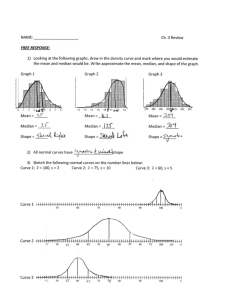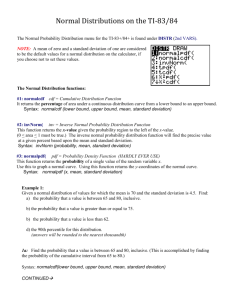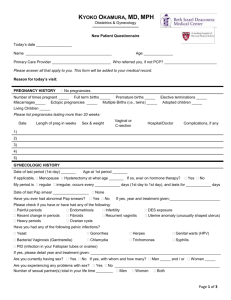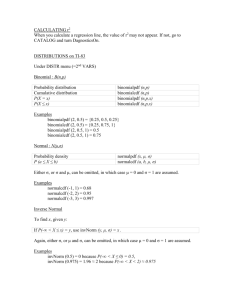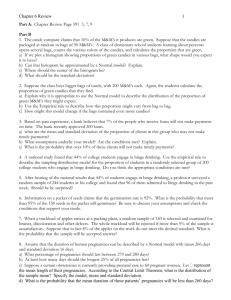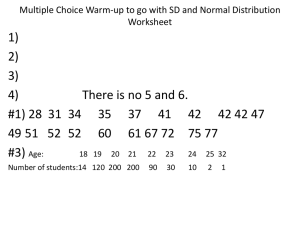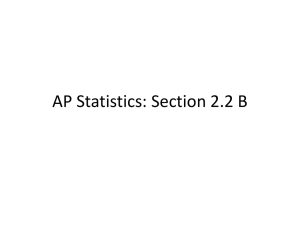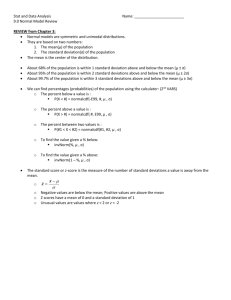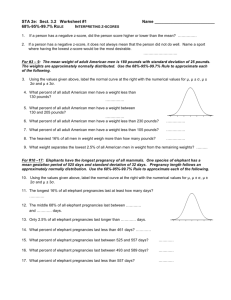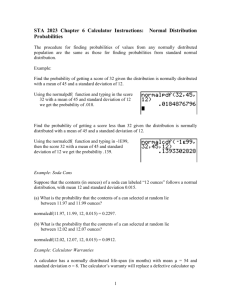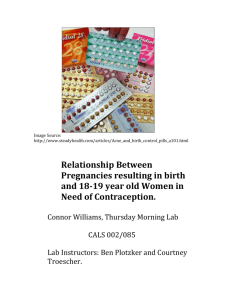ws1
advertisement
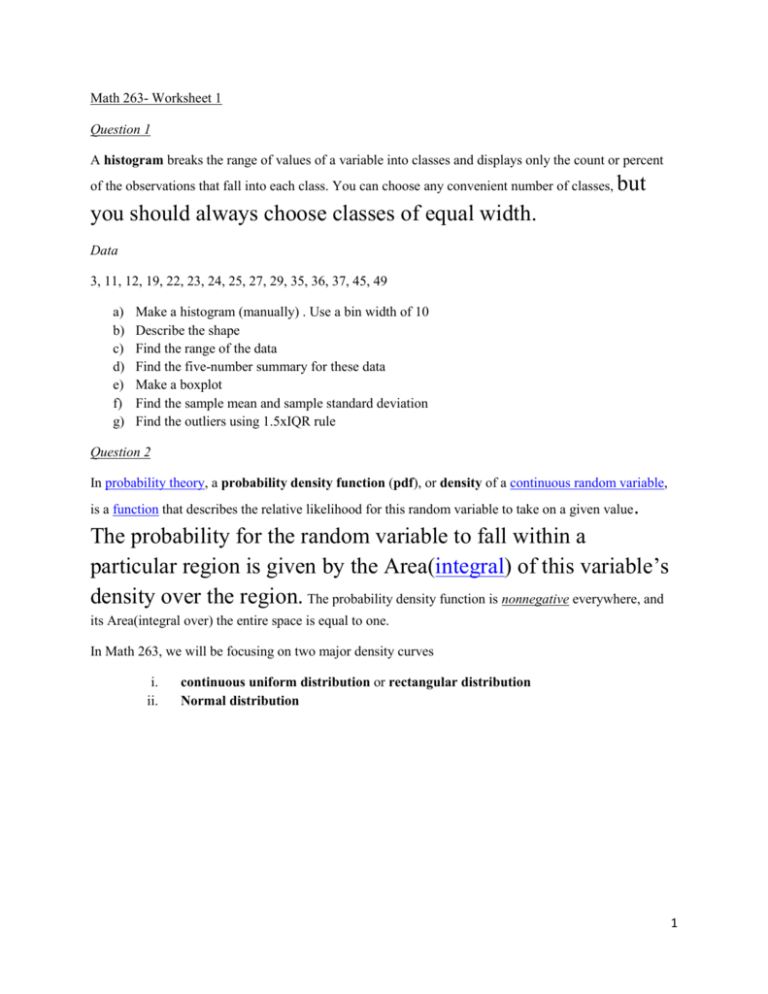
Math 263- Worksheet 1
Question 1
A histogram breaks the range of values of a variable into classes and displays only the count or percent
of the observations that fall into each class. You can choose any convenient number of classes,
but
you should always choose classes of equal width.
Data
3, 11, 12, 19, 22, 23, 24, 25, 27, 29, 35, 36, 37, 45, 49
a)
b)
c)
d)
e)
f)
g)
Make a histogram (manually) . Use a bin width of 10
Describe the shape
Find the range of the data
Find the five-number summary for these data
Make a boxplot
Find the sample mean and sample standard deviation
Find the outliers using 1.5xIQR rule
Question 2
In probability theory, a probability density function (pdf), or density of a continuous random variable,
is a function that describes the relative likelihood for this random variable to take on a given value
.
The probability for the random variable to fall within a
particular region is given by the Area(integral) of this variable’s
density over the region. The probability density function is nonnegative everywhere, and
its Area(integral over) the entire space is equal to one.
In Math 263, we will be focusing on two major density curves
i.
ii.
continuous uniform distribution or rectangular distribution
Normal distribution
1
i. Rectangular distribution
In probability theory and statistics, the continuous uniform distribution or rectangular distribution is
a family of symmetric probability distributions such that for each member of the family, all intervals of
the same length on the distribution's support are equally probable. The support is defined by the two
parameters, a and b, which are its minimum and maximum values.
ii.Normal distribution
In probability theory, the normal (or Gaussian) distribution is a very commonly
occurring continuous probability distribution—a function that tells the probability of a
number in some context falling between any two real numbers. Normal distributions are
extremely important in statistics and are often used in the natural and social sciences for
real-valued random variables whose distributions are not known.
The Normal Distribution is also called the Gaussian distribution. It is defined by two
parameters mean ('average' µ) and standard deviation (σ). A theoretical frequency
distribution for a set of variable data, usually represented by a bell-shaped curve
symmetrical about the mean.
2
Normal : N(μ,σ)
Probability density
normalpdf (x, μ, σ)
P (a ≤ X ≤ b)
normalcdf (a, b, μ, σ)
Either σ, or σ and μ, can be omitted, in which case μ = 0 and σ = 1 are assumed.
Examples
normalcdf (-1, 1) = 0.68
normalcdf (-2, 2) = 0.95
normalcdf (-3, 3) = 0.997
Inverse Normal
To find x, given y:
If P(-∞ < X ≤ x) = y, use invNorm (y, μ, σ) = x .
Again, either σ, or μ and σ, can be omitted, in which case μ = 0 and σ = 1 are assumed.
Examples
invNorm (0.5) = 0 because P(-∞ < X ≤ 0) = 0.5,
invNorm (0.975) = 1.96 ≈ 2 because P(-∞ < X < 2) ≈ 0.975
3
1)The length of human pregnancies from conception to birth varies according to a distribution
that is approximately normal with mean 260 days and standard deviation 15 days.
Part 1
Use the 68-95-99.7 rule to answer the following questions (Note that your answers would be
approximate values).
(a) Between what values do the lengths of the middle 95% of all pregnancies fall?
(b)How short are the shortest 2.5% of all pregnancies?
(c)How long do the longest 2.5% of pregnancies last?
Part 2
Use your graphing calculator (Using InvNorm ) to answer the following questions.
(a) Between what values do the lengths of the middle 95% of all pregnancies fall?
(b)How short are the shortest 2.5% of all pregnancies?
(c)How long do the longest 2.5% of pregnancies last?
Part 3
a) What percent of pregnancies last less than 240 days?
b) What percent of pregnancies last between 240 and 270 days?
4
2)The variable Z has a standard normal distribution.
(a) Find the number z that has cumulative proportion 0.75.
(b) Find the number z such that the event Z > z has proportion 0.15.
(c) Find the number z such that the event Z < z has proportion 0.65.
3)Using either Table A or your calculator or software, find the proportion of observations from a
standard normal distribution that satisfies each of the following statements.
(a) Z < -0.28
(b) Z > -0.28
(c) Z > 0.86
(d) -0.28 < Z < 0.86
5

